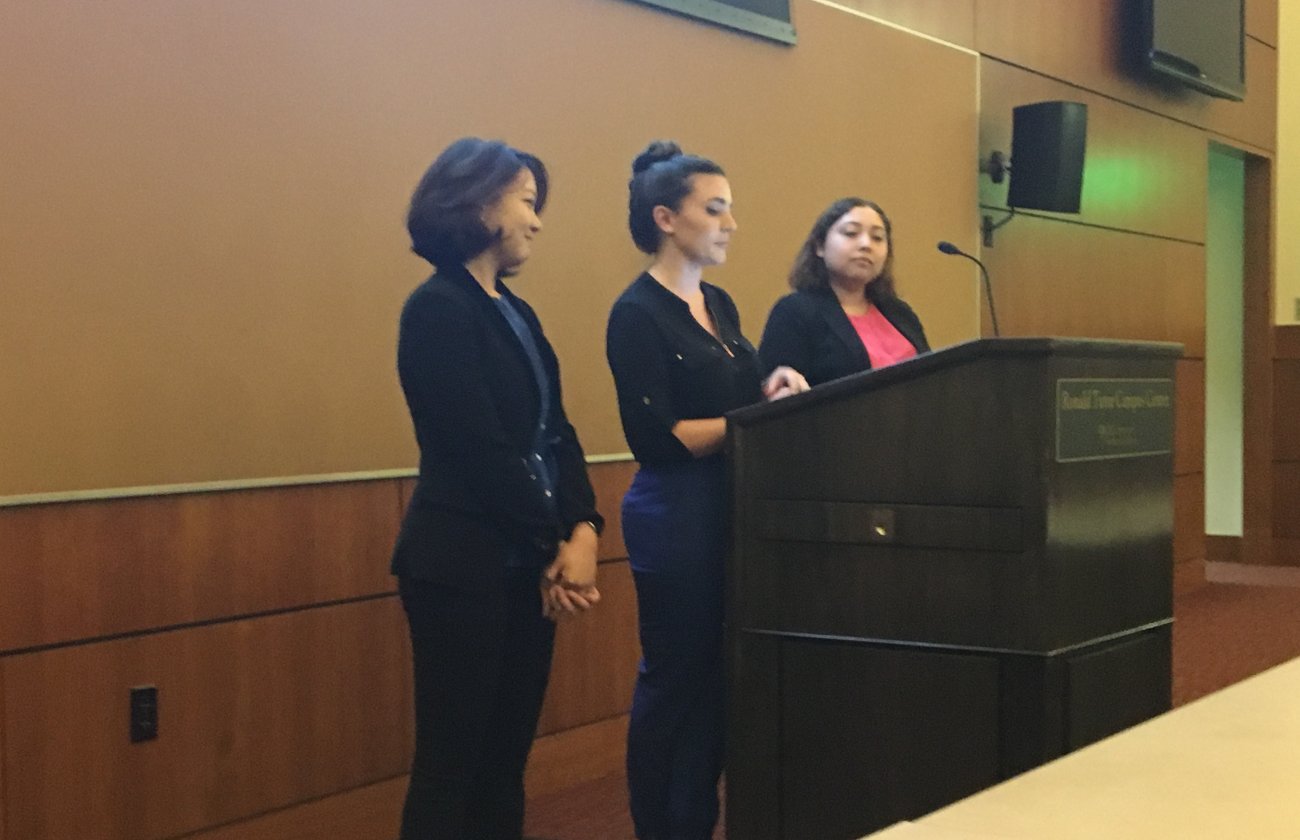Each year, the best and brightest minds in the world of journalism and media convene at The Association for Education in Journalism and Mass Communication (AEJMC) Conference.

Students, faculty and staff participate in a 2014 USC Annenberg Journalism Forum, organized by Prof. Robert Hernandez, about augmented reality.
Several Annenberg faculty members —including Professors Joe Saltzman, Bill Celis, Mike Ananny, Jerry Swerling, Felix Guitierrez, Kjerstin Thorson and Aimei Yang — will be among the more than 2,000 attendees at this year’s conference August 6-9 in Montréal, Canada.
“It is the only place where you can meet and talk with journalism and communication educators and media scholars on a personal, professional and academic basis,” Saltzman said of the conference. “It is a marvelous opportunity to see how other schools of journalism tackle curriculum problems, research, publication and tenure problems, and the future of journalism in these changing times.”
During the three day conference, Professor Felix Gutierrez will present on the panel "Minority Scholars Forging Ahead In Academia: Guidance from Communication Theories, Research Findings and Personal Experiences,” while Saltzman will present on a panel about the pros and cons of embedding pro-social messages in entertainment. Past Annenberg faculty presentation topics have included public relations, entertainment studies, LGBT issues and more.
“Since USC Annenberg is a leader in many of these fields, we have a chance to share ways of doing things that are unique and interesting to academics,” Saltzman said. “The AEJMC conference gives us a chance to exchange ideas, opinions, concepts with journalism scholars from around the world.”
Saltzman, who is the director of the Norman Lear Center’s Image of the Journalist in Popular Culture (IJPC) Project, has helped contribute to the IJPC panel’s which have become a popular fixture at the annual conferences since the Project’s founding in 2000. This year, Saltzman didn’t have the time to create an IJPC panel as he was co-writing the book “Heroes & Scoundrels: The Image of the Journalist in Popular Culture” due out next year, but saw speaking on the ““Opportunities and Challenges of Entertainment-Education Interventions for Global Justice” panel as a way to draw attention to the work of another Norman Lear Center program, Hollywood, Health & Society (H,H&S.) “[H,H&S] works behind the scenes as program consultants on dozens of critically acclaimed television shows to ensure that health storylines are depicted as accurately as possible,” Saltzman said. “These American shows have a global following and health messages embedded into these programs have an effect all over the planet. Through the IJPC, I have seen first-hand the opportunities and challenges of entertainment-education interventions for global justice in a variety of fields.”
Annenberg Professors Kjerstin Thorson and Aimei Yang will also contribute to interest groups and research sessions at the conference, Professors Jerry Swerling and Mike Ananny presented a panel, and Professor Robert Hernandez will receive a second-place Best of the Web Award for his ARchive LAPL project (though he will not be in attendance). Designed by a class of seven undergraduate and graduate students under Hernandez’s leadership last fall, the ARchive LAPL project is an Augmented Reality (AR) iPhone application called Junaio which, when used at the Los Angeles Central Library in conjunction with the iPhone camera, pulls up historical and architectural information about the library including news articles and photos.
“We looked at how how this new emerging technology that takes advantage of a smartphone or potentially a wearable device can really elevate the concept of contextual storytelling for journalism,” Hernandez said of the Augmented Reality course, which was taught for the first time at USC last year. “It knows where you are and what you’re looking at and has the power of the internet, and we wanted to combine that for a new way of storytelling.”
Given the success of the application, as well as favorable feedback from City Hall, Hernandez will teach another Augmented Reality course in the spring and hopes to be able to apply the same innovative technology to augment other Los Angeles landmarks. Hernandez received a second and third-place award at last year’s AEJMC conference for his work with Professor Gutierrez on the Ruben Salazar Project, and plans to submit more work in the future, furthering enriching USC Annenberg’s fifteen-year history with the AEJMC conference. The AEJMC is a nonprofit education association whose mission is to provide media professionals, educators and students with resources to advance education, research and professional practice about journalism and mass communication.
“For me personally, the AEJMC has made it possible for me to turn the image of the journalist in popular culture into a worldwide discipline recruiting faculty and students from around the world to think about this subject,” Saltzman said. “Without the AEJMC conference, there would have been no efficient way to reach all of these people and to explain to them, through my panels and video compilations, through meetings and social exchanges, through personal and professional contacts, what the IJPC is and why it is important. For me and the IJPC, the AEJMC conference has been one of the most valuable ways of extending the USC Annenberg brand throughout academia.”
Though this year’s conference attendance was somewhat smaller than in years past due to the current flurry of activity and exciting changes at USC Annenberg, faculty presence at the conference is still strong, and Saltzman hopes for even greater Annenberg representation at next year’s AEJMC Conference in San Francisco.







